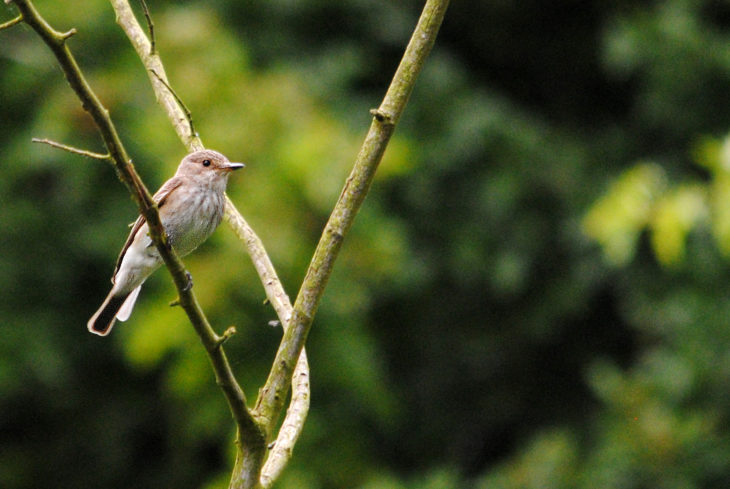All you need to know about spotted flycatchers!
There are some elusive birds that live on the reserve in very low numbers and are subsequently very hard to find. The spotted flycatcher is one such bird but Mike my seasonal ranger along with a troop of badger watchers was lucky enough to see a whole family of them last Saturday evening. It has been a while since I’ve seen them on the reserve and although we’ve put up carefully placed nest boxes specifically for them; they are as yet, unused.

Spotted flycatchers are unassuming medium-sized songbirds found across Britain in open woodland, parks and gardens. They are streaky, greyish-brown, pale underneath and with a streaky crown and breast. As well as being plain to look at they also have an unremarkable song, it is squeaky, mostly unmelodic and very soft. It is not something you’d notice unless you were specifically listening out for it.
Despite their drab appearance, spotted flycatchers are relatively easy to spot because they like to flick their relatively long tail whilst perching on exposed posts of branches. They will patiently wait here until an insect flies past, then with they will quickly dart out catching their prey mid-air. Spotted flycatchers prefer larger insects like flies and butterflies but if the weather is cold they will also take smaller invertebrates from leaves and branches.
They are one of the last summer migrants to return to Britain from Africa, appearing in late May, and then only spending a brief period here until their return south in late August. Despite their short stay, they often manage to raise two broods, with a second clutch often having less eggs, increasing their chance of success. It is amazing to think that no sooner have these fledgling birds learned to fly; all of a sudden, they are setting off on a vast voyage across deserts and seas to Africa!
Laura Preston, Falls of Clyde Ranger
Help support our vital work and join us today!
Help protect Scotland’s wildlife
Our work to save Scotland’s wildlife is made possible thanks to the generosity of our members and supporters.
Join today from just £3 a month to help protect the species you love.
Preface
There are some elusive birds that live on the reserve in very low numbers and are subsequently very hard to find. The spotted flycatcher is one such bird but Mike …
